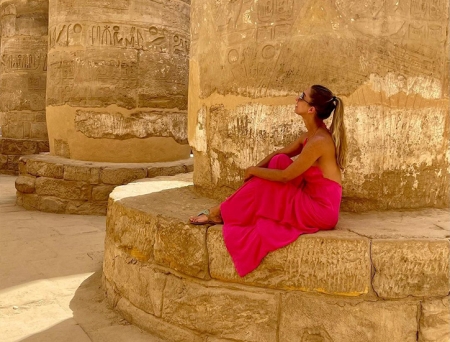Location:
It is located at Dahshur, at some distance to the Northeast of Snofru's Red Pyramid.
Who built it?
It was built by Sesostris III, who was the second king of the 12th Dynasty.
Why was it built?
This pyramid was built as the ancient Egyptians believe in resurrection. Sesostris III was buried in this pyramid according to the ancient Egyptian concept of life after death.
Explanation:
The pyramid was built directly on the desert gravel, which did not add to the stability of the monument. The inner core was made of mud bricks laid in stepped horizontal courses. No mortar was used to attach the bricks to each other. The core was encased in limestone block joined together with dovetail-shaped cramps. The bottom course was built on a foundation of three courses of mud bricks.
Some of the original casing blocks were found, revealing that the monument was built with a slope of 56�18'35". The pyramid measured 105 meters at the base and rose to a height of some 78 meters.
The entrance to the pyramid is located in front of the western face of the monument, near the northern corner. The tradition, which dates back to the Early Dynastic Period, of having the entrance passage point towards the northern stars was no longer followed.
From the entrance, a passage descends under the pyramid, turning south to an antechamber. There is a small magazine to the east of the antechamber, while the burial chamber is located to the west.
The burial chamber was made of granite, which was plastered with gypsum. The granite sarcophagus stood to the west, while the canopic chest was stored in a niche in the south of the burial chamber.
The burial chamber was found as good as empty, without any trace of a burial. It is not certain that the king was actually buried here.
The pyramid was surrounded by a a square enclusore wall which was then extended to the south and north. To the east of the pyramid there was a small temple. To the north, there was an entrance chapel, but as the actual entrance was not located there, this chapel was just a remnant of an abandonned tradition.
Also to the North, there were some shaft tombs for some of the women of the royal family. There are four pyramids located there, but the gallery of tombs located here is more complex. In one of the tombs, belonging to princess Sat-Hathor, a chest with the princess's jewellery was found. More treasure was found in another tomb, belonging to the princess Merit.
To the south of the pyramid, there were also some shaft tombs for the women of the royal family. The tomb of Queen Weret, the mother of Sesostris III had its entrance in the south, but the actual burial chamber was located underneath the pyramid of the king. Some scattered bones inside the sarcophagus may perhaps have been Weret's.
Also to the south, outside the original enclosure but inside the second, stood a temple. Only the outline of the temple has been preserved. There was a forecourt with columns followed by a covered part with the actual sanctuary. Parts of the decoration that were found suggest that this followed the tradition with representations of the Heb Sed.
Some boatpits were found just outside the second enclosure wall, to the South.
A causeway connected to the southeast part of the second enclosure, but it has not been examined. It is not known if this causeway connected to a Valley Temple.
Egypt Travel Guide
Egypt Oases
- Gara Cave
- Al-Deer
- Badr's Museum
- Bagawat
- Black desert
- Cleopatra bath
- Great Sand Sea
- Mizawaka
- Monastery of Anba Bishoy
- Mountain of the Dead in Siwa | Gebel al-Mawta
- Qarun Lake
- Roman Temple in Deir El-hagar
- Temple of Alexander the Great
- Temple of Amon
- Temple of Dush
- Temple of Hibis
- Temple of Nadura
- The Crystal Mountain | Bahariya Crystal Mountain
- The Monastery of Abu Makar (Makarios) | Egypt
- The Monastery of Baramus | Egypt
- The Monastery of El Suryan | Cairo Attractions
- Therapy in Siwa Oasis
- Valley of Al-Haiz
- Valley of the Golden Mummies
- Wadi Al- Rayan, Protected Area | Fayoum, Egypt
- Wadi El-Natroun | The Monasteries of Wadi El Natrun
- The White Desert in Egypt
- Fayoum Bird-watching Guide
Ports of Call
Red Sea and Sinai
Famous Mosques in Egypt
Transportation guide in Egypt
Egypt Tourist Attractions
Egypt Pyramids
- Djedefre Pyramid | Abu Rawash
- Abu Sir | Egyptian Necropolis & Pyramids
- King Snefru's Pyramid | Egypt
- Old Kingdom Pyramids | Ancient Egypt
- Pyramid Complex of Pepi I
- Pyramid of Amenemhat III
- Pyramid of lahun | Egypt Pyramids
- Pyramid of Meidum
- Pyramid of Neferhetepes | Egypt Pyramids
- Pyramid of Netjerkhet | Egypt Pyramids
- Pyramid of Neferefre
- Pyramid of Sahure | Egypt Pyramids
- Pyramid of Sekhemkhet
- Pyramid of Sesostris III
- Pyramid of Teti | Egypt Pyramids
- Pyramid of Userkaf | Egypt Pyramids
History of Egypt
- The False Doors | Ancient Egypt Secrets
- Egyptian Canopic Jars: What are Canopic Jars?
- Holy Family in Egypt
- king khufu (Cheops) | Kings of Ancient Egypt
- Khafre Statue | King Khafre Pyramid
- Who built the first pyramid in Egypt
- Menkaure (Mykerinos) Pyramid | King Menkaure
- Ramesses IV | Ramses iv Tomb
- Ramses IX Tomb
- The Divine Triad of Dendera
Aswan Attractions
Luxor Attractions
Alexandria Attractions
Cairo Attractions
- Famous Bab al Futuh
- Al-Tannoura Egyptian Heritage Dance Troupe
- Saints Sergius and Bacchus Church
- Abusir Pyramids & The City of The Dead Egypt
- Agricultural Museum Egypt, Cairo
- AL Fustat Historical City
- Bab El Nasr Cairo City Gate
- Beit Al Sennari or Al Sennari House in Cairo
- The Cairo Tower
- Birqash Camel Market in Cairo
- Coptic Cathedral in Abbasiya
- Egyptian Museum Guide
- El Mosky Cairo | Bazaars & Souks
- King Tutankhamun Treasures: Inside the World of Egypt’s Most Famous Pharaoh
- The Mosque of Muhammad Ali Pasha in Cairo
- Royal Mummy Room in The Egyptian Museum
- The Pharaonic Village
- The Great Sphinx of Giza
- Babylon Fortress Facts
- Solar Boat Museum
- Valley Temple of Khafre
- St Mary Egypt Orthodox Church
- Verdi Aida Opera Show in Giza Pyramids Egypt
Discover captivating pharaonic history through an exciting tour that suits your financial conditions in 8 days. Visit the Pyramids before heading down to Aswan by Egypt sleeper train to cruise between Luxor & Aswan.
and see how great the ancient Egyptians were to build such gigantic pyramids.
Plan Your Trip!
You Might Also Like

ABU- Rawash, located in the continuation of Gebel el-Ghigiga. The western fringe of the Nile Valley (30°2'N,3l°4'E).

ABU-SIR, an archaeological locality on the western bank of the Nile River, approximately 25kilometers ( 15 miles) southwest of Cairo.

A site on the western bank of the Nile River; 65 kilometers south of Cairo. A step Mastaba and a royal cemetery were constructed there from the transitional years of the third to fourth dynasty.

Archaeologists have made many valuable discoveries in this area. We have the Saqqara complex, located 1.6 km inward from the escarpment where wooden bas-reliefs were found in the offering room of the mastaba of the high functionary Hesire.

Pepi I , the first king of the 6th Dynasty, had built his pyramid complex South Saqqara . His two immediate predecessors, Unas and Teti, Know More!
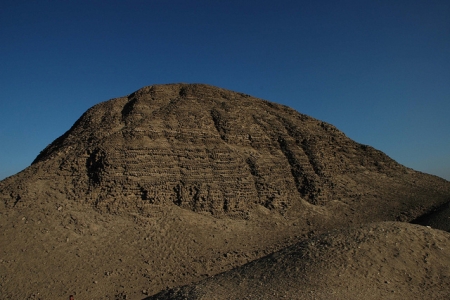
This pyramids owes its name to the fact that its core was made of white limestone. It has suffered a lot from stone robbers. Know more!

Lahun is the name of a modern village located near the opening of the Hawara Channel from the Nile Valley into the Fayum basin. Explore more about Lahun Pyramid with Memphis Tours!

It is located at medium, 80 km to the South of Memphis, on the Westbank of the Nile, to the East of Lake Moris and the Fayum oasis.

The pyramid is located about 100m south of Userkaf's pyramid, which is located at Sakkara. It was built for Neferhetepes who was a queen of Userkaf.
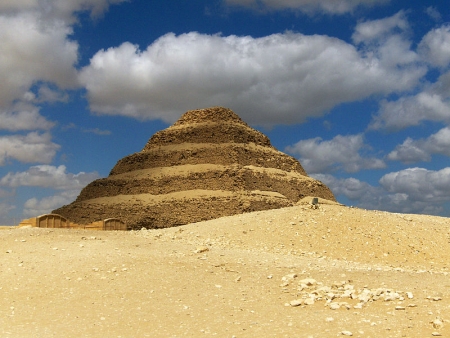
Standing 60 meters high, Netjerikhet's Step Pyramid, the oldest pyramid-like monument built in Egypt, was the centerpiece not only of the Netjerikhet complex but of the entire Saqqara area.
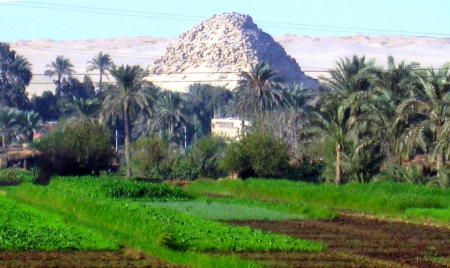
Recognize the story of Neferefre Pyramid through Memphis Tours! This pyramid is located at Abusir. It was built by King Raneferef, also known as Neferefre, who ruled for 3 or 4 years only during the 5th Dynasty.
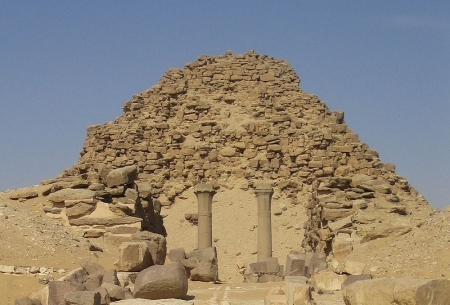
Sahure constructed the first pyramid at Abusir. A great many extremely beautiful high reliefs were found here by Borchardt when he excavated in 1902-1908.

Pyramid of Sekhemkhet is located just southwest of the pyramid of Unas, at Sakkara. It was built by Sekhemkhet, who was a pharaoh of the 3rd Dynasty and ruled for about 9 years. Explore Sekhemkhet now with Memphis Tours!

Located at Dahshur, Pyramid of Sesostris III is at some distance to the Northeast of Snofru's Red Pyramid. Know more!

Located in Central Saqqara just south of the 1st dynasty mastabas and northeast of Userkaf's pyramid, Pyramid of Teti was built by Teti, the first king of the 6th dynasty who ruled Egypt for some 32 years.

The local description for the the pyramid is el-haram el-makherbish "ruined pyramid". The pyramid is not on the tourist track and requires a 30 minute track through the soft sand from the step pyramid to reach.


